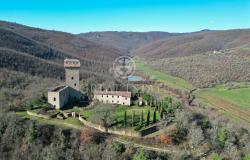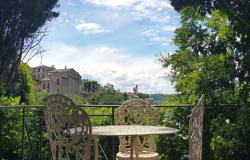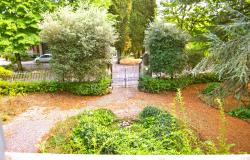A 13th-century Perugia church founded by the Knights Templar is destined to become an international centre of research on the Christian military monks who have inspired a host of films and bestsellers.
The church of San Bevignate, founded in 1256 and dedicated to a local 5th-century hermit, reopened on Friday after several years of restoration, which included transforming the nave into a 250-seat space for cultural events.
The church is of singular importance for the order of monk-warriors since it holds a unique cycle of frescoes containing complex moral symbolism and recounting episodes in their history, including a battle scene showing the legendary knights fighting the Muslims.
San Bevignate was damaged in a 1997 earthquake but has since been allocated state funds of around 1.8 million over the last seven years for restoration work.
The Templars were founded in 1119 by knights sworn to protect Christian pilgrims visiting the Holy Land. Legends of their hidden treasures and secret rituals and power have featured in films and books such as Walter Scott's Ivanhoe and Dan Brown's The Da Vinci Code.
The Templars left the Middle East when Muslims reconquered the Holy Land at the end of the 13th century. But they remained powerful and were seen as a threat by some European rulers.
Some historians believe that French king Philip IV owed the Templars money and accused them of blasphemy and heresy in order to destroy the order and resolve his debt problems.
In fact, Philip had the Templar leaders arrested and tortured, thereby extorting confessions of heresy.
Jacques de Molay, Grand Master of the Templars, was burned at the stake in 1314.
In 2007 the Vatican published documents detailing a 1308 bid by Pope Clement V to save the Templars and their order.
It shows that he absolved the Templar leaders of the heresy charge, although he accepted they were guilty of other sins, including sexual misconduct.
It is thought that Clement eventually gave in under pressure from Philip to save the unity of the Church and disbanded the order in 1312.
Various organisations exist that claim to be the modern incarnation of the Templars, some of which carry out charitable works.
A lay order of the Roman Catholic Church, the Militia Templi, follow a modern adaptation of the Rule written by St Bernard of Clairvaux for the medieval Knights Templar.









